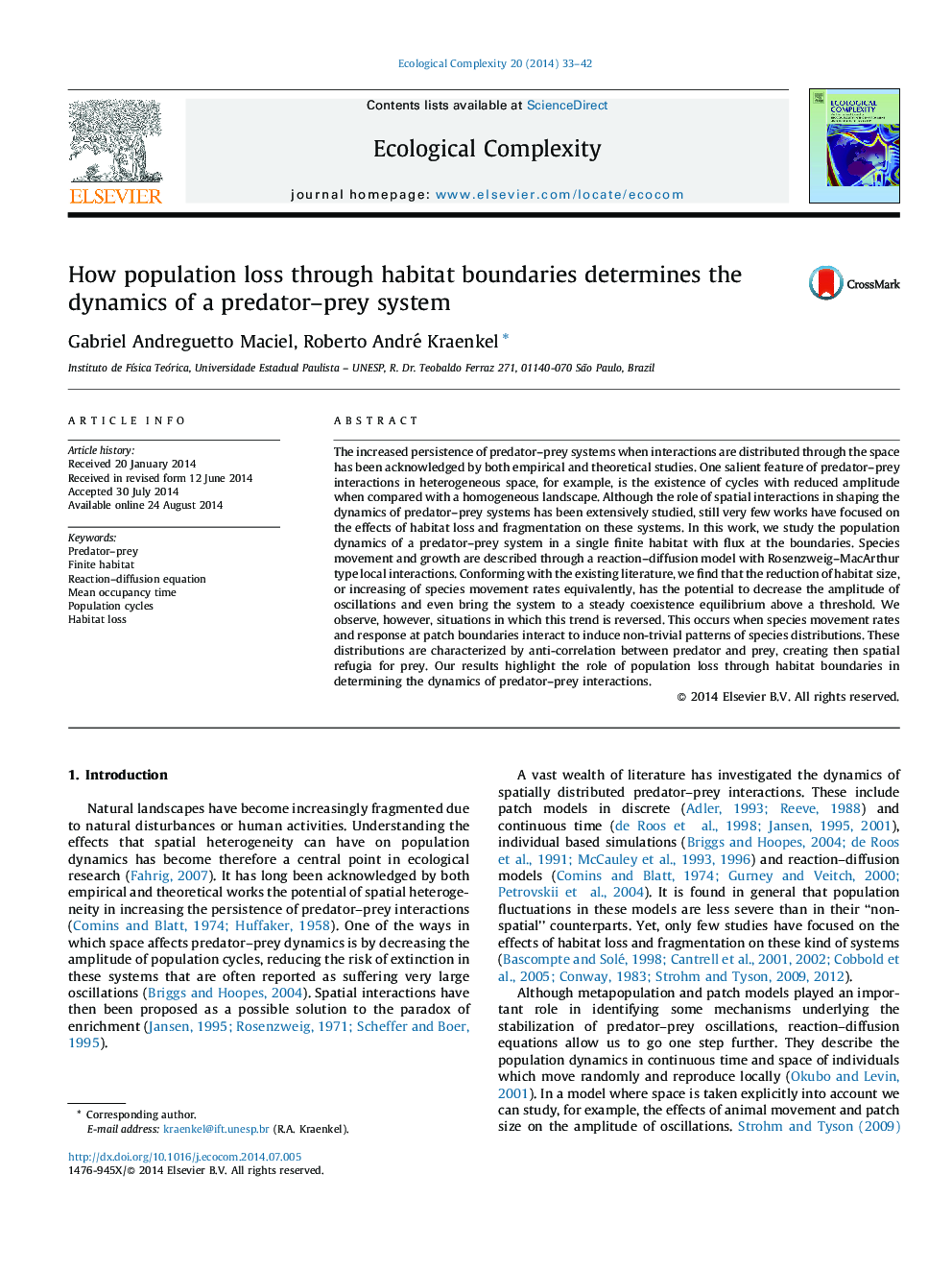| کد مقاله | کد نشریه | سال انتشار | مقاله انگلیسی | نسخه تمام متن |
|---|---|---|---|---|
| 4372354 | 1617094 | 2014 | 10 صفحه PDF | دانلود رایگان |
• Habitat loss and increased movement rates bring predator–prey oscillations to a halt.
• Boundary conditions determine stable coexistence and cycling regions.
• For small diffusivities steady coexistence is due to anti-correlated spatial densities.
• Approximations based on mean occupancy time perform well in our predator–prey system.
The increased persistence of predator–prey systems when interactions are distributed through the space has been acknowledged by both empirical and theoretical studies. One salient feature of predator–prey interactions in heterogeneous space, for example, is the existence of cycles with reduced amplitude when compared with a homogeneous landscape. Although the role of spatial interactions in shaping the dynamics of predator–prey systems has been extensively studied, still very few works have focused on the effects of habitat loss and fragmentation on these systems. In this work, we study the population dynamics of a predator–prey system in a single finite habitat with flux at the boundaries. Species movement and growth are described through a reaction–diffusion model with Rosenzweig–MacArthur type local interactions. Conforming with the existing literature, we find that the reduction of habitat size, or increasing of species movement rates equivalently, has the potential to decrease the amplitude of oscillations and even bring the system to a steady coexistence equilibrium above a threshold. We observe, however, situations in which this trend is reversed. This occurs when species movement rates and response at patch boundaries interact to induce non-trivial patterns of species distributions. These distributions are characterized by anti-correlation between predator and prey, creating then spatial refugia for prey. Our results highlight the role of population loss through habitat boundaries in determining the dynamics of predator–prey interactions.
Journal: Ecological Complexity - Volume 20, December 2014, Pages 33–42
